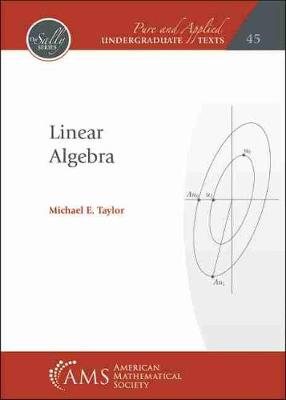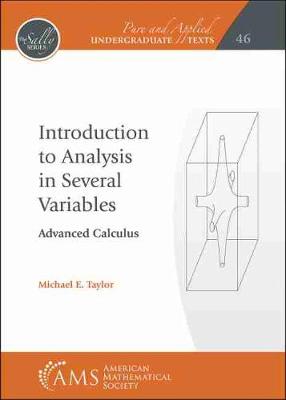Pure and Applied Undergraduate Texts
3 total works
This text develops linear algebra with the view that it is an important gateway connecting elementary mathematics to more advanced subjects, such as advanced calculus, systems of differential equations, differential geometry, and group representations. The purpose of this book is to provide a treatment of this subject in sufficient depth to prepare the reader to tackle such further material. The text starts with vector spaces, over the sets of real and complex numbers, and linear transformations between such vector spaces. Later on, this setting is extended to general fields. The reader will be in a position to appreciate the early material on this more general level with minimal effort. Notable features of the text include a treatment of determinants, which is cleaner than one often sees, and a high degree of contact with geometry and analysis, particularly in the chapter on linear algebra on inner product spaces. In addition to studying linear algebra over general fields, the text has a chapter on linear algebra over rings. There is also a chapter on special structures, such as quaternions, Clifford algebras, and octonions.
This text was produced for the second part of a two-part sequence on advanced calculus, whose aim is to provide a firm logical foundation for analysis. The first part treats analysis in one variable, and the text at hand treats analysis in several variables.
After a review of topics from one-variable analysis and linear algebra, the text treats in succession multivariable differential calculus, including systems of differential equations, and multivariable integral calculus. It builds on this to develop calculus on surfaces in Euclidean space and also on manifolds. It introduces differential forms and establishes a general Stokes formula. It describes various applications of Stokes formula, from harmonic functions to degree theory.
The text then studies the differential geometry of surfaces, including geodesics and curvature, and makes contact with degree theory, via the Gauss-Bonnet theorem. The text also takes up Fourier analysis, and bridges this with results on surfaces, via Fourier analysis on spheres and on compact matrix groups.
After a review of topics from one-variable analysis and linear algebra, the text treats in succession multivariable differential calculus, including systems of differential equations, and multivariable integral calculus. It builds on this to develop calculus on surfaces in Euclidean space and also on manifolds. It introduces differential forms and establishes a general Stokes formula. It describes various applications of Stokes formula, from harmonic functions to degree theory.
The text then studies the differential geometry of surfaces, including geodesics and curvature, and makes contact with degree theory, via the Gauss-Bonnet theorem. The text also takes up Fourier analysis, and bridges this with results on surfaces, via Fourier analysis on spheres and on compact matrix groups.
This is a text for students who have had a three-course calculus sequence and who are ready to explore the logical structure of analysis as the backbone of calculus. It begins with a development of the real numbers, building this system from more basic objects (natural numbers, integers, rational numbers, Cauchy sequences), and it produces basic algebraic and metric properties of the real number line as propositions, rather than axioms. The text also makes use of the complex numbers and incorporates this into the development of differential and integral calculus. For example, it develops the theory of the exponential function for both real and complex arguments, and it makes a geometrical study of the curve (expit)(expit), for real tt, leading to a self-contained development of the trigonometric functions and to a derivation of the Euler identity that is very different from what one typically sees. Further topics include metric spaces, the Stone-Weierstrass theorem, and Fourier series.


